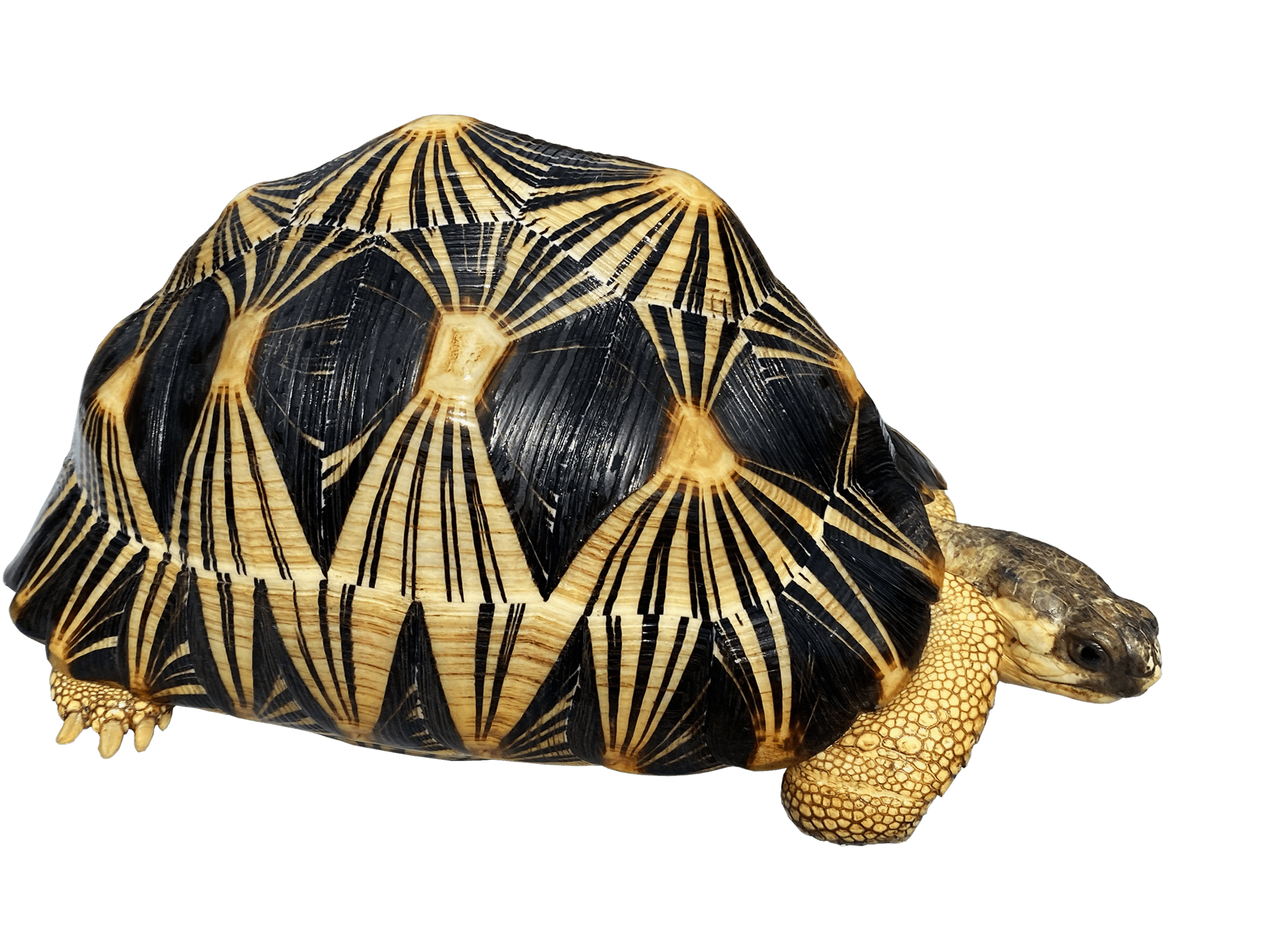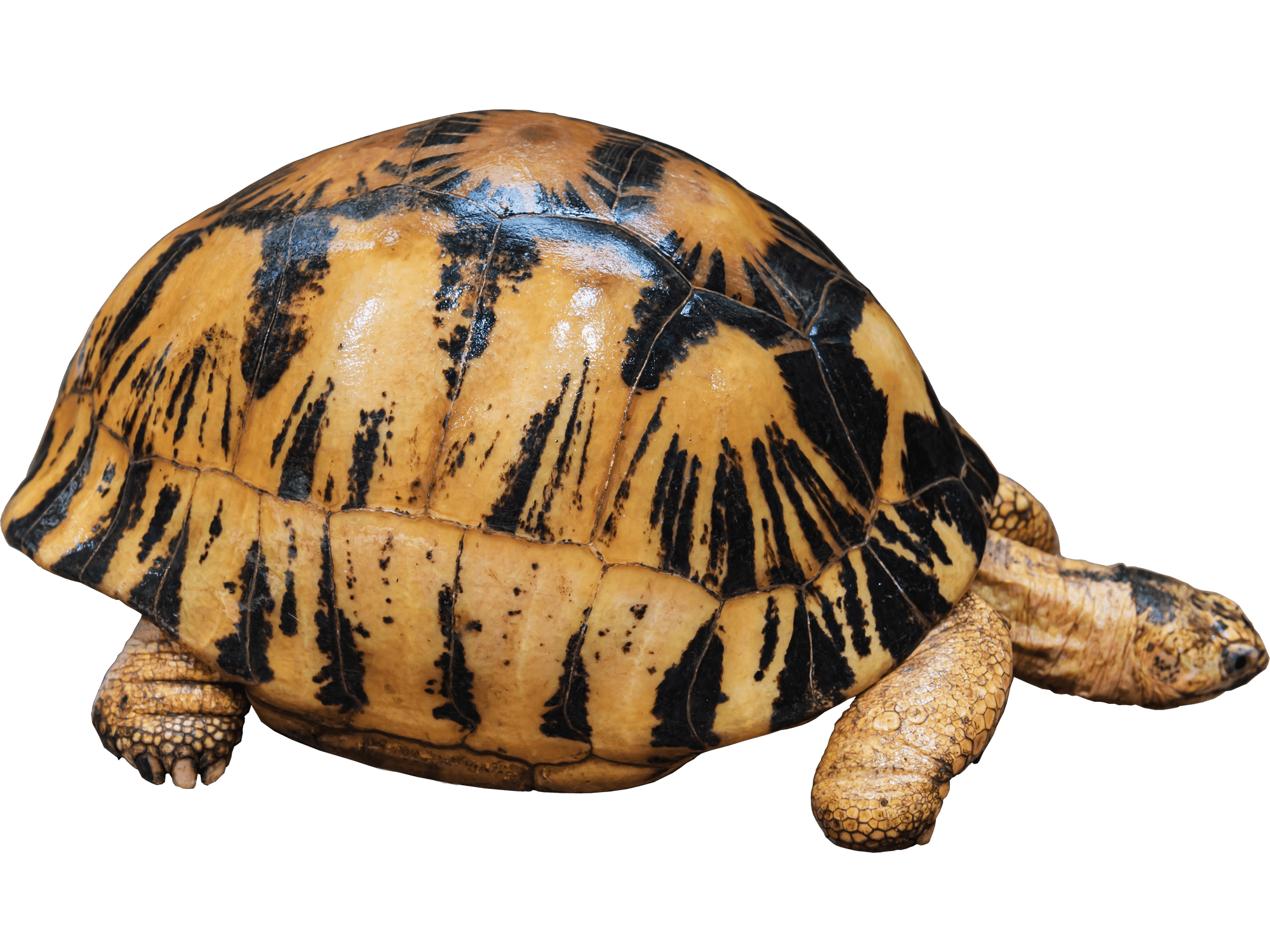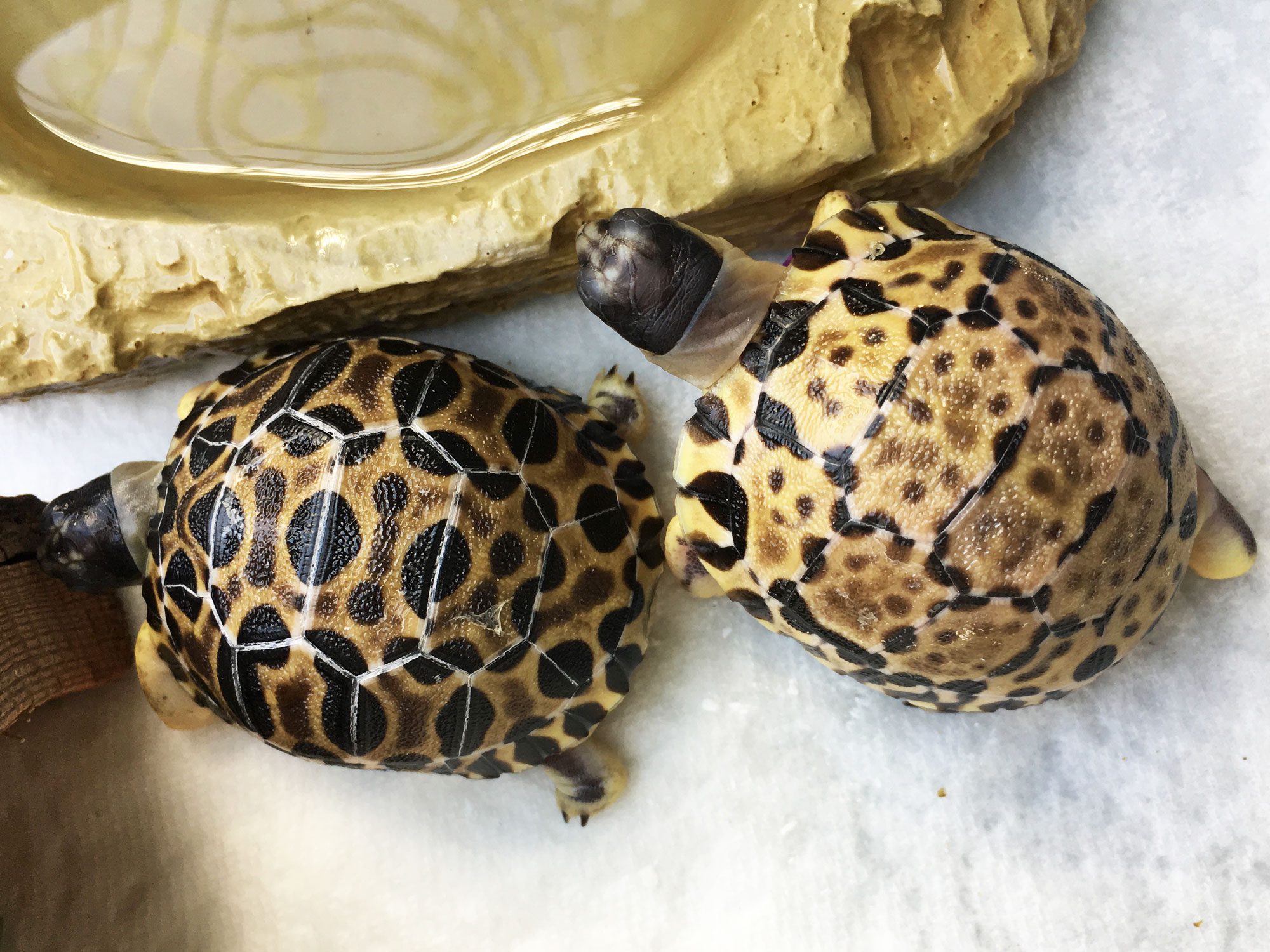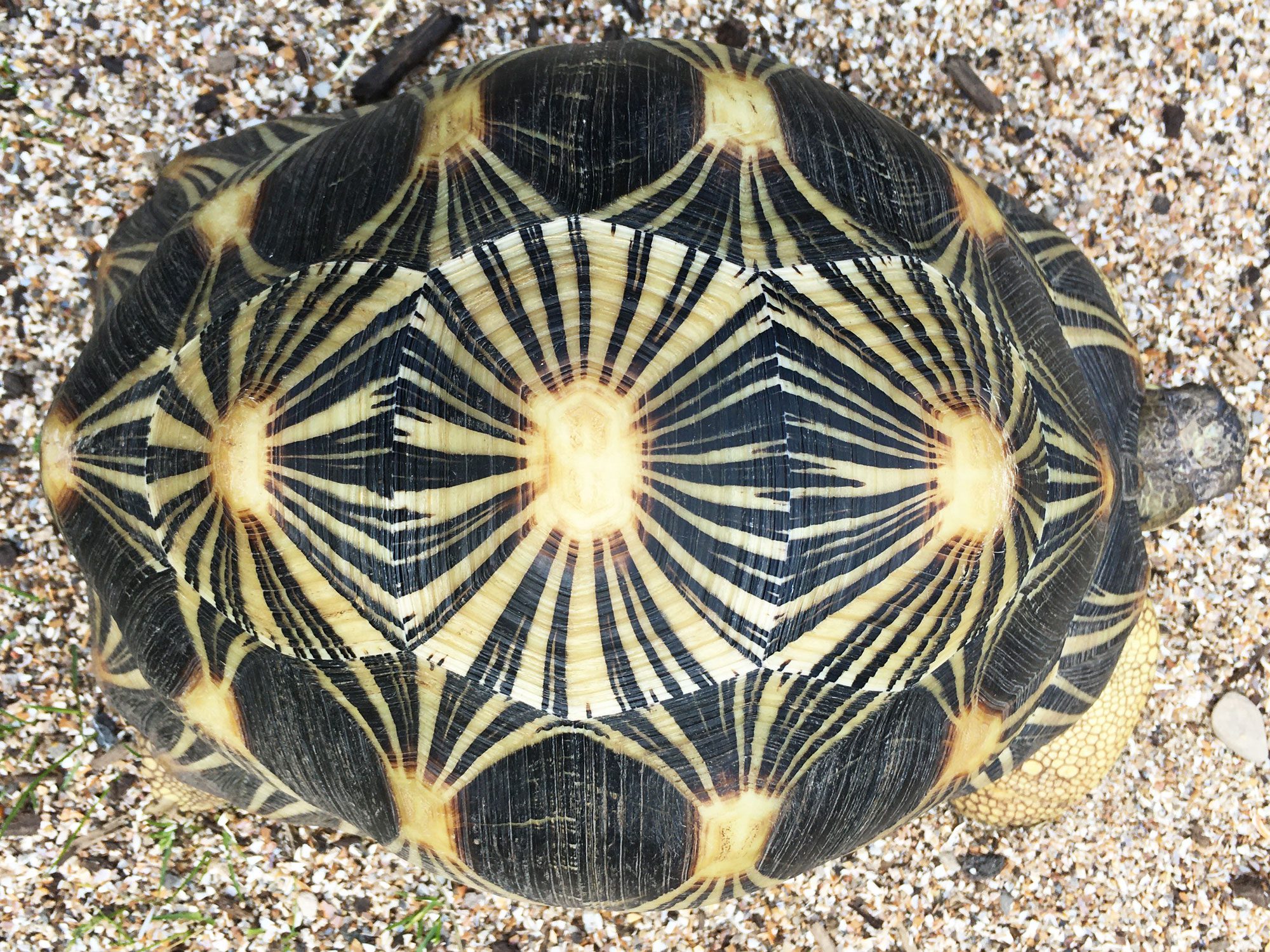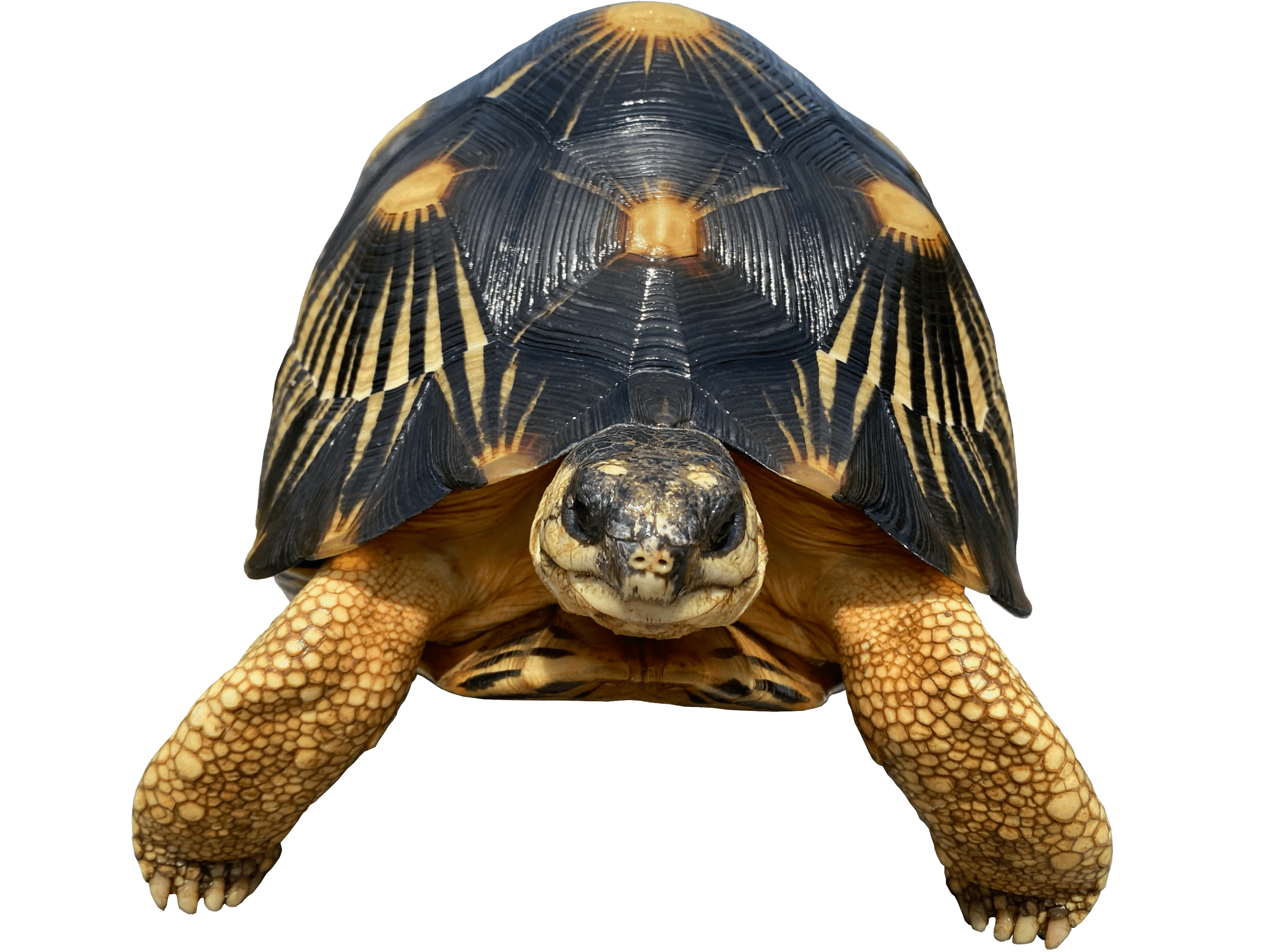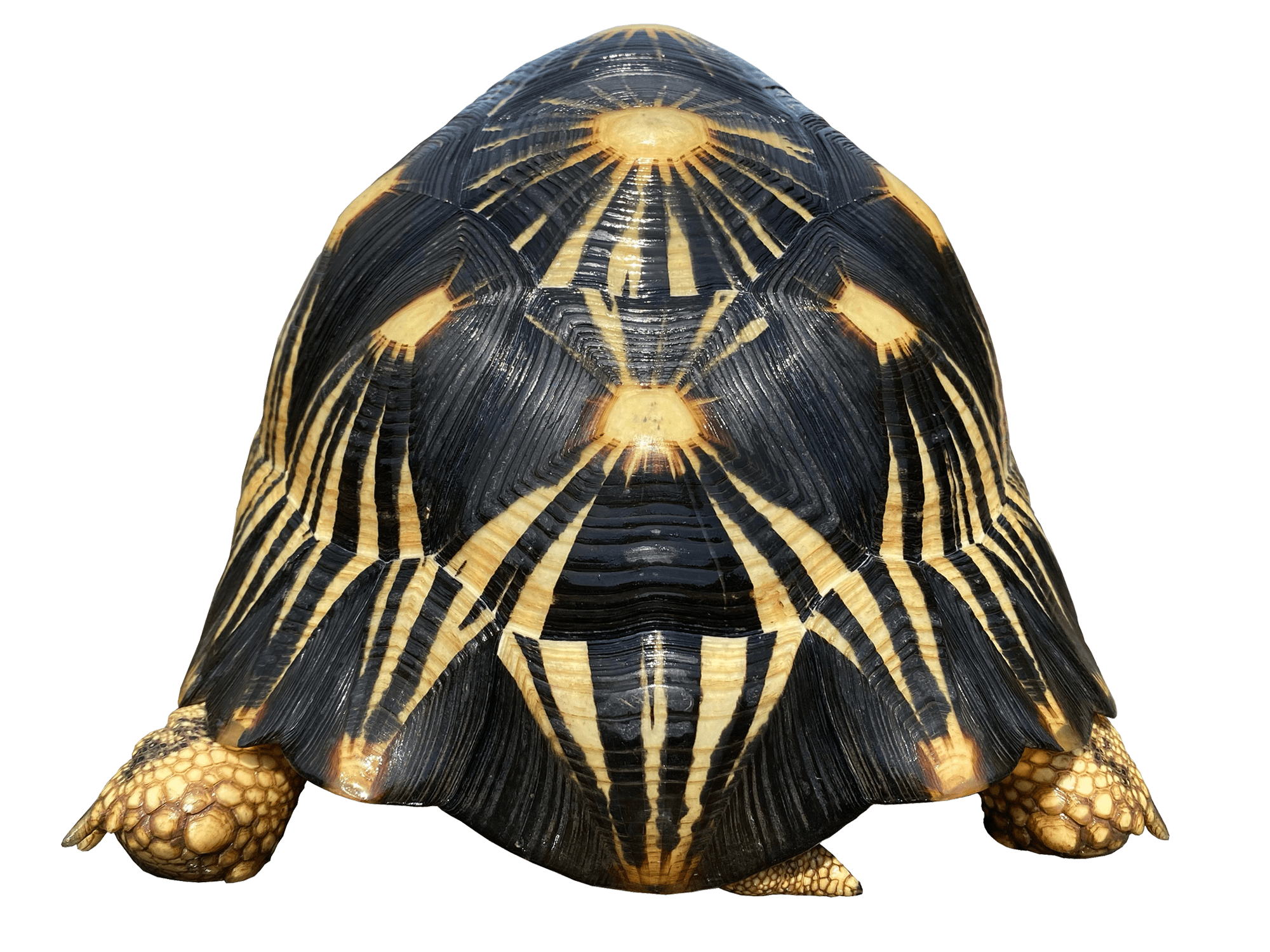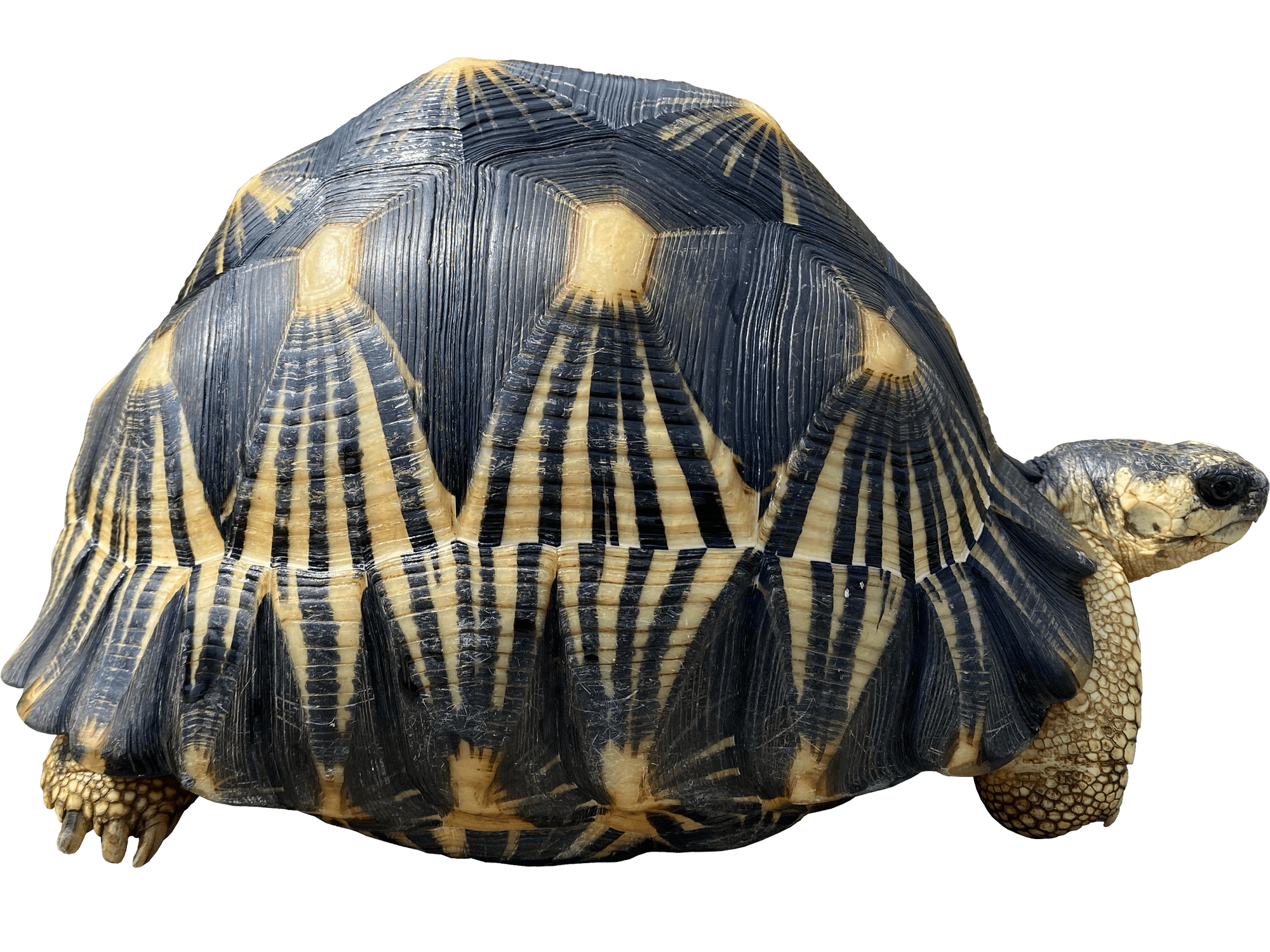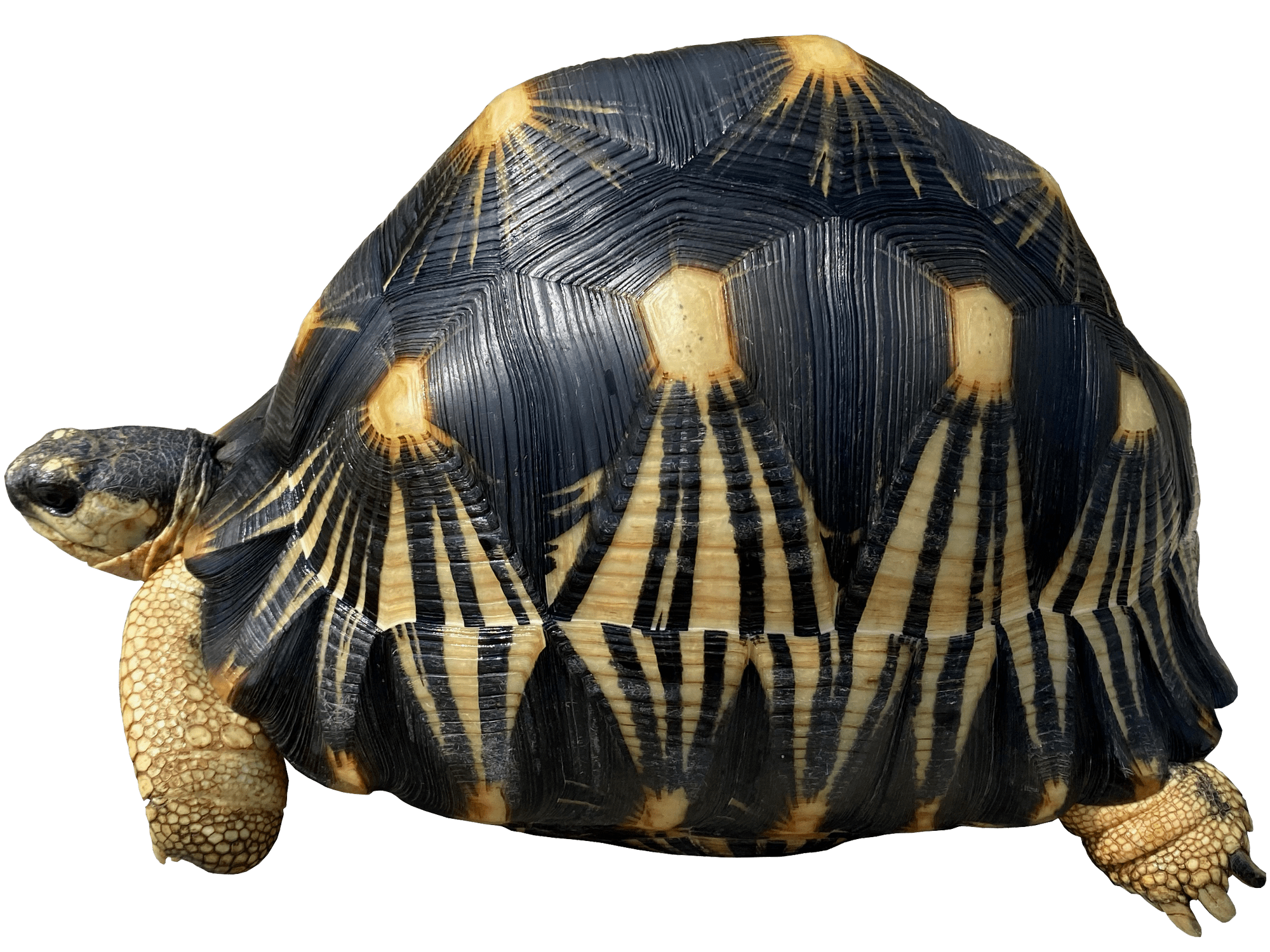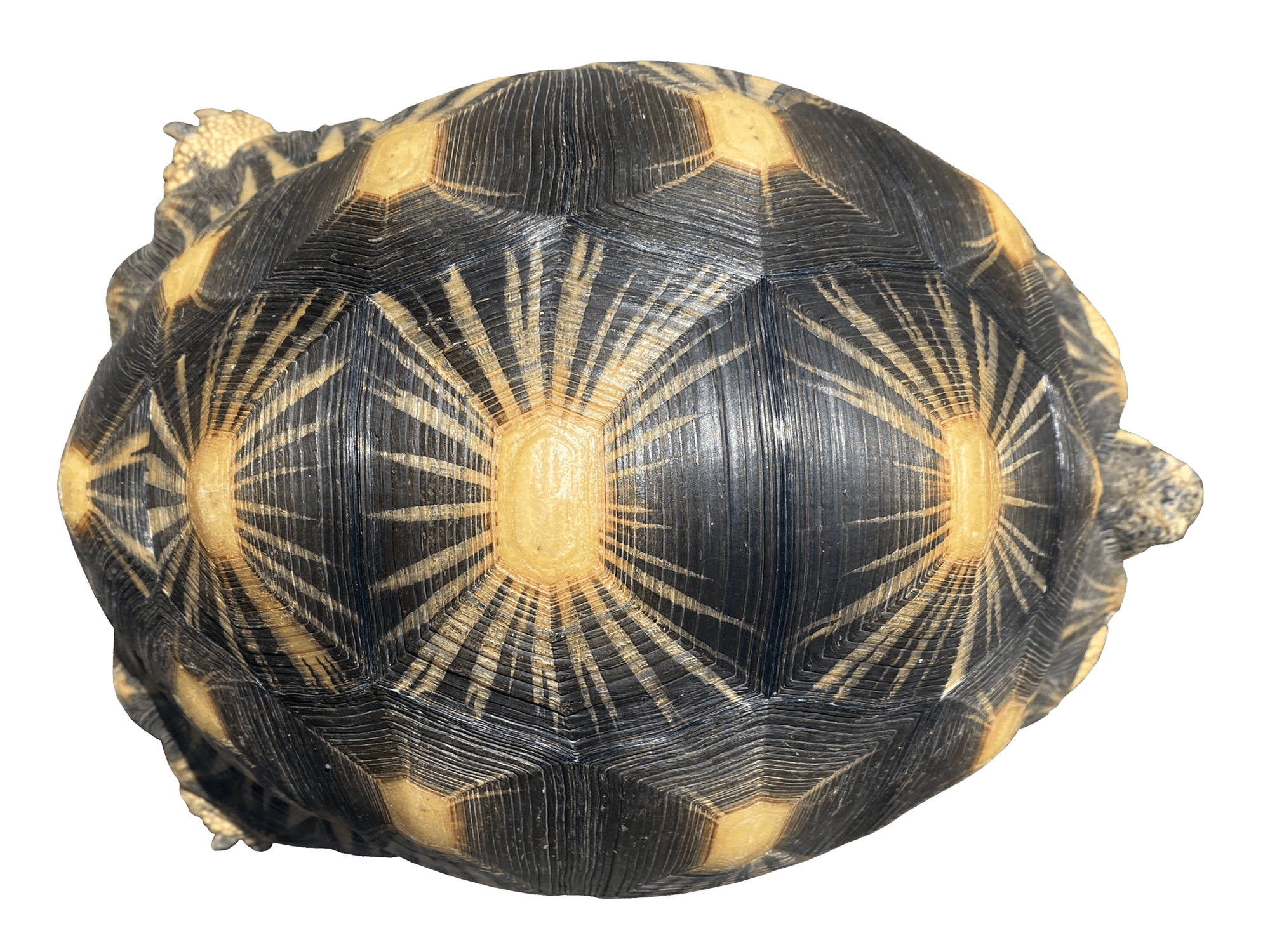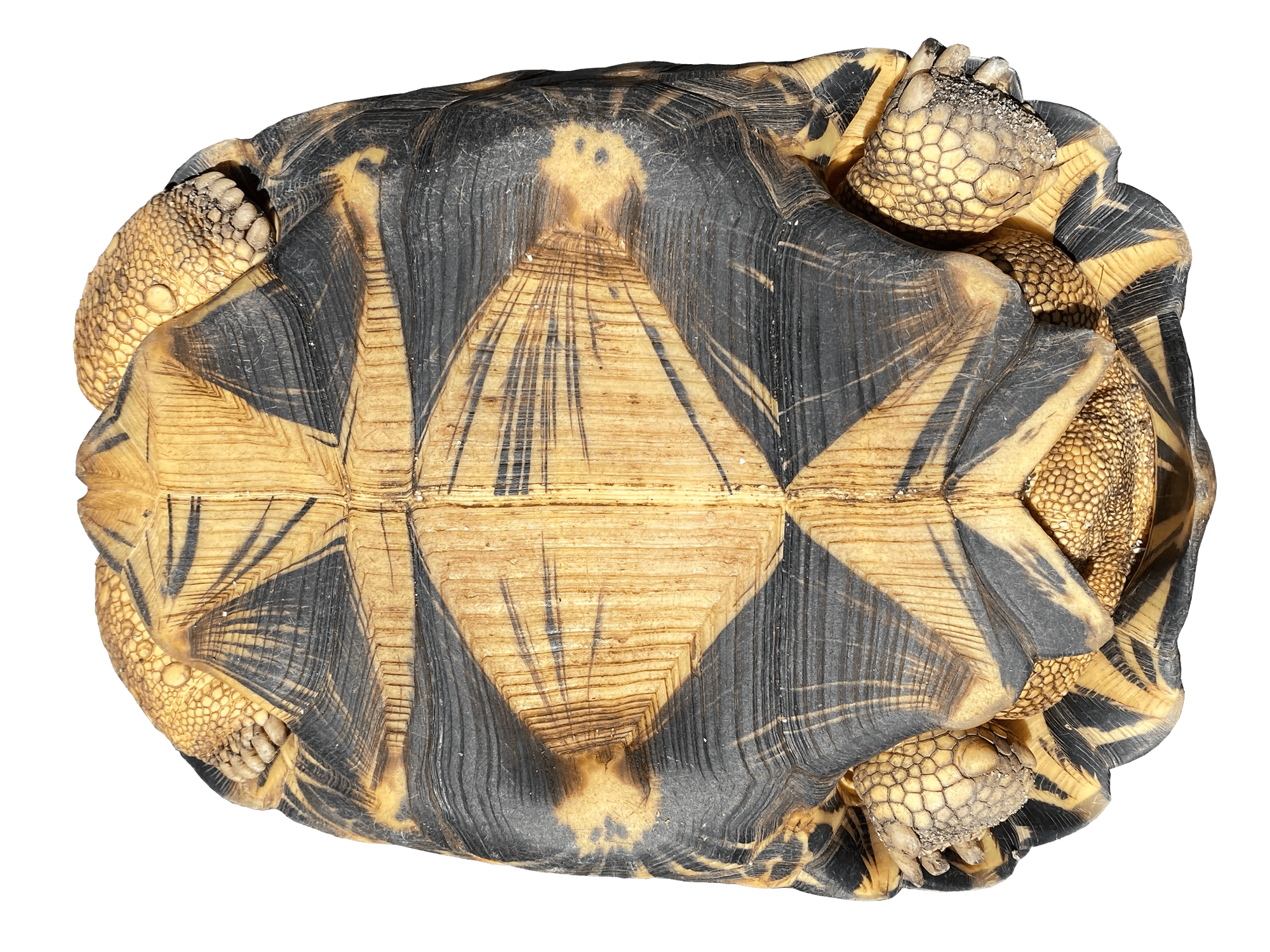Description
A distinctive feature of this species is the extremely high-arched, spherical and smooth dorsal carapace with the eponymous yellowish lines radiating outward on each carapace segment on a dark background. In most rayed turtles, the base color of the carapace is lacquer black with characteristic yellow stripes emanating from a light center. The reverse color variation with a light yellow background and black radial stripes is less common. The ray pattern, which is individual for each specimen, continues on the dorsal carapace as well as on the ventral carapace. The basic color of the plastron is yellow and shows a pattern with black areas and lines.
In young specimens, the ray pattern is usually particularly colorful and distinctive. With age, the characteristic markings become increasingly faded and the concentric growth rings of the carapace are usually no longer recognizable due to wear and tear (rubbing against stones and bushes). Very old specimens can therefore be completely washed out yellow or black. A distinction is made between dark and light individuals based on the presence of the yellow part. Radiated tortoises are particularly conspicuous and popular as they have a clear, uniform yellow radiate pattern on all shields. These specimens are also known as "high yellow". Animals that are completely black and without any markings are rare. Although the yellow-black line pattern appears conspicuous at first glance, the contours of a resting radiated tortoise completely dissolve in a dry grass or bush landscape. Hatchlings of Astrochelys radiata still have an inconspicuous baby camouflage pattern in their first year of life. This means that they are particularly well protected from predators on sandy, stony ground and in dry foliage. The characteristic ray pattern only becomes visible when the first growth rings appear, after approx. 1 ½ years.
The top of the head is ash colored and may have several light spots, the throat and neck are cream to yellow. The very stout legs and tail also have a yellow coloration. The horn scales of the forelegs are round and flat. The claws are conical and rather blunt. Unlike its sister species, the Malagasy Ploughshare Tortoise, it does not have a prominent extension of the gular shield at the anterior end of the ventral carapace. The posterior marginal shields are somewhat curved up and serrated, and the caudal shield is undivided and curved downward. The ventral carapace is yellow with a large black triangle on the outer edge of each of the arm, thoracic, ventral, and thigh shields. The throat shields are mostly featureless. The anal shields and sometimes the ventral shields have black ray markings. A nuchal shield is present, the supracaudal shield is undivided, and there are 11 marginal shields on each side of the carapace.

